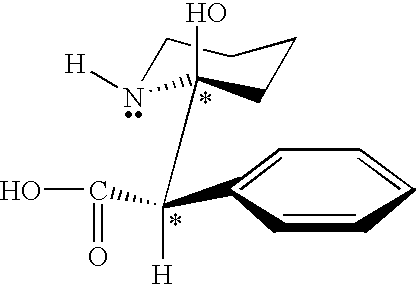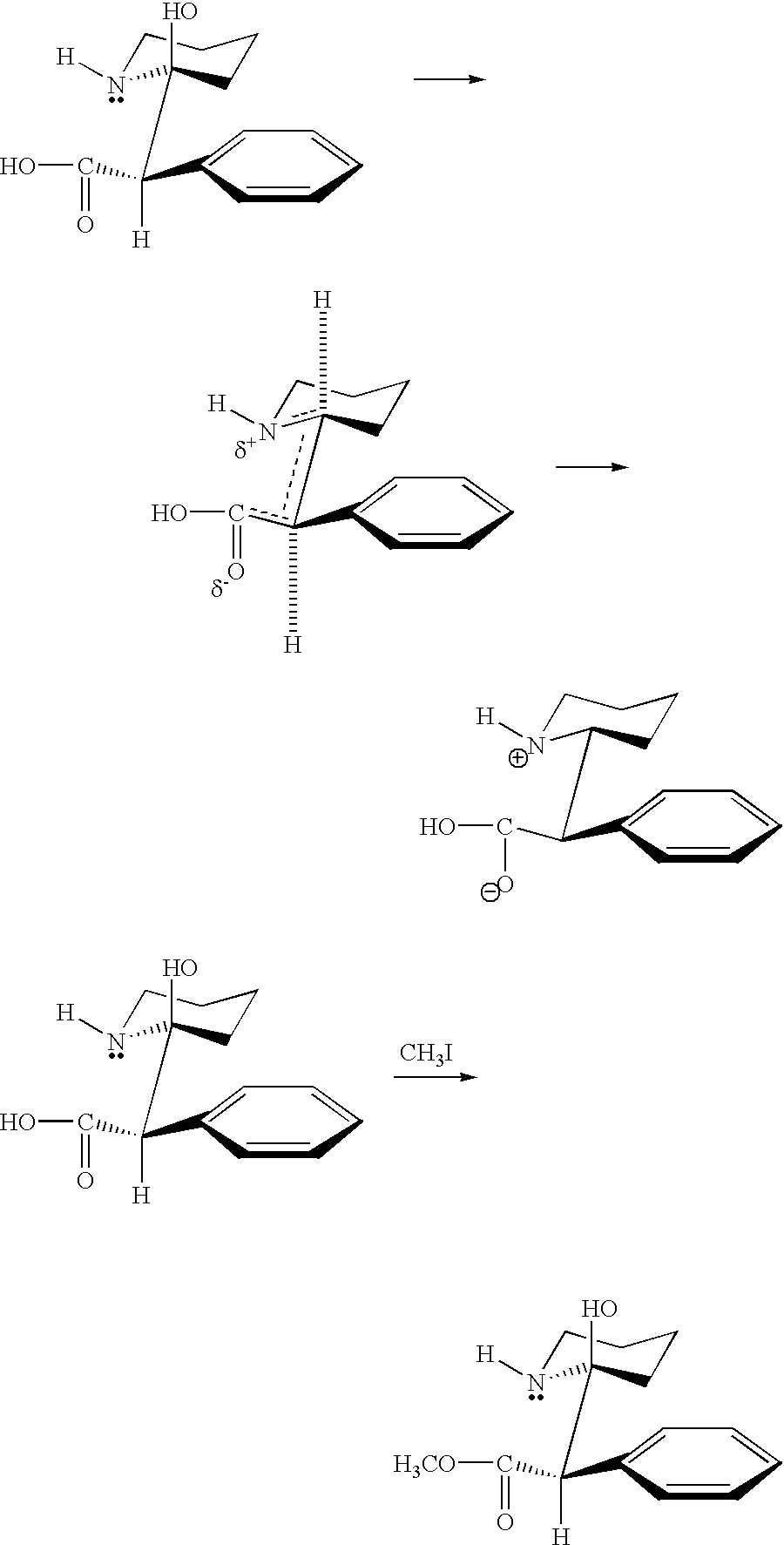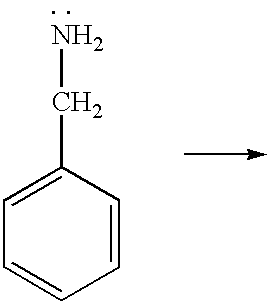Application of chiral critical clusters to assymetric synthesis
a critical cluster and assymetric synthesis technology, applied in the field of molecular clusters, can solve the problems of increasing the odds that trapped molecules might encounter reactive collisions, unable to disclose the use of fluids as reaction medium, and the use of critical clusters for drug synthesis formed by directing the position of bonding between ligands and molecules wherein new chiral centers are formed,
- Summary
- Abstract
- Description
- Claims
- Application Information
AI Technical Summary
Problems solved by technology
Method used
Image
Examples
example 1
The solvatochromic behavior of the organic dye phenol blue was compared using various polar and nonpolar solvents mixed in supercritical carbon dioxide. The technique used for the comparison was high-pressure UV / visible spectroscopy.
Referring to FIG. 3, an optical cell 5 was constructed from a 1 / 16 inch outer diameter (o.d.) stainless steel tubing which was connected to the cell using standard HPLC fittings. The internal bore of the cell was enlarged from 250 microns to 685 microns to yield a cell volume of 0.74 .mu.L. The pathlength of the cell was 2 mm. Fiber optics (Ceram Optec Inc.) were used to bring light into 6 and out of 7 the cell. The fibers were 600 micron o.d., but were coated with a silica cladding and polyimide buffer to maximize light through-put. The total outer diameter of the fiber was 710 microns. The bare-end of the fiber was polished so that no imperfections were observed at 40.times.magnification. The fibers were mounted into the cell using polyetheretherketone...
example 2
The solvatochromic behavior of the organic dye phenol blue was compared using solvent S(+) and R(-)-2-butanol and S(+) and R(-)-2-octanols. The technique used for the comparison was the same as in EXAMPLE 1.
The results are shown in FIG. 6. These results show the differences of the solvatochromic behavior of phenol blue at pressures near the critical pressure of the fluid mixture. The fluid mixture was comprised of 5% organic solvent in supercritical carbon dioxide. At pressures at or near the critical pressure of carbon dioxide, there is greater delineation of the chiral solvent molecules. As in the above example, this implies clustering of solvent molecules at or near the critical pressure of carbon dioxide.
example 3
This example illustrates the ability to use critical clusters for condensing achiral benzaldehyde to form optically active S(+)benzoin.
The cell used in this Example is illustrated in FIG. 7. Referring to FIG. 7, a high pressure optical cell 20 was used which was capable of sustaining supercritical fluid pressures up to 350 bar and temperatures to 125.degree. C. The cell was equipped with both entrance and exit sapphire windows and was sealed onto a stainless steel reactor housing through Teflon gaskets which yielded an active volume of 16 .mu.L. Ultraviolet light was allowed to enter and exit the cell so that light input to the cell could be maximized by adjusting the focusing lens position. The ultraviolet light source consisted of an unfiltered high pressure mercury arc lamp 21 (Osram Inc., 500 watt lamp) whose light outlet was focused through reflection from a parabolic mirror 22 onto an additional focusing lens 23 which maximized the photon flux into a 2 mm diameter fiber optic ...
PUM
| Property | Measurement | Unit |
|---|---|---|
| Fraction | aaaaa | aaaaa |
| Fraction | aaaaa | aaaaa |
| Fraction | aaaaa | aaaaa |
Abstract
Description
Claims
Application Information
 Login to View More
Login to View More - R&D
- Intellectual Property
- Life Sciences
- Materials
- Tech Scout
- Unparalleled Data Quality
- Higher Quality Content
- 60% Fewer Hallucinations
Browse by: Latest US Patents, China's latest patents, Technical Efficacy Thesaurus, Application Domain, Technology Topic, Popular Technical Reports.
© 2025 PatSnap. All rights reserved.Legal|Privacy policy|Modern Slavery Act Transparency Statement|Sitemap|About US| Contact US: help@patsnap.com



